1. Outdoor Kitchens
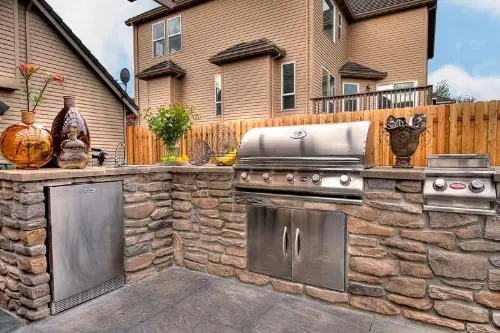
Outdoor kitchens sound like the ultimate luxury—grill, sink, maybe even a pizza oven. The problem is, they’re expensive to build and even more expensive to maintain. Weather takes a toll on appliances, and stainless steel doesn’t stay shiny forever outside. Unless you’re cooking out there constantly, the cost just doesn’t add up over time.
Many people realize after the novelty wears off that they barely use the setup. In climates with lots of rain, snow, or extreme heat, an outdoor kitchen might only get used a handful of times each year. Repairs can also cost more than fixing indoor appliances since parts are harder to find. What started as a “dream yard” addition often turns into a money pit.
2. Water Features
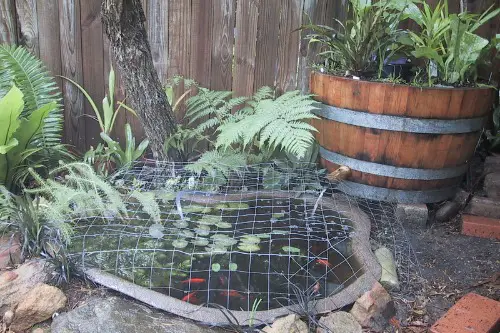
That bubbling fountain or koi pond may look amazing on Instagram, but it doesn’t age gracefully. Pumps break, algae grows, and water levels constantly need adjusting. If you live somewhere with freezing winters, the freeze-thaw cycle can crack liners and pipes. The upkeep is endless, and the costs pile up faster than expected.
Beyond the mechanical headaches, water features can attract mosquitos if they’re not properly maintained. Cleaning out leaves, debris, or dead fish isn’t anyone’s idea of relaxing backyard time. Plus, electricity bills rise because those pumps run nonstop. What looks peaceful at first quickly becomes a chore you regret.
3. Artificial Turf
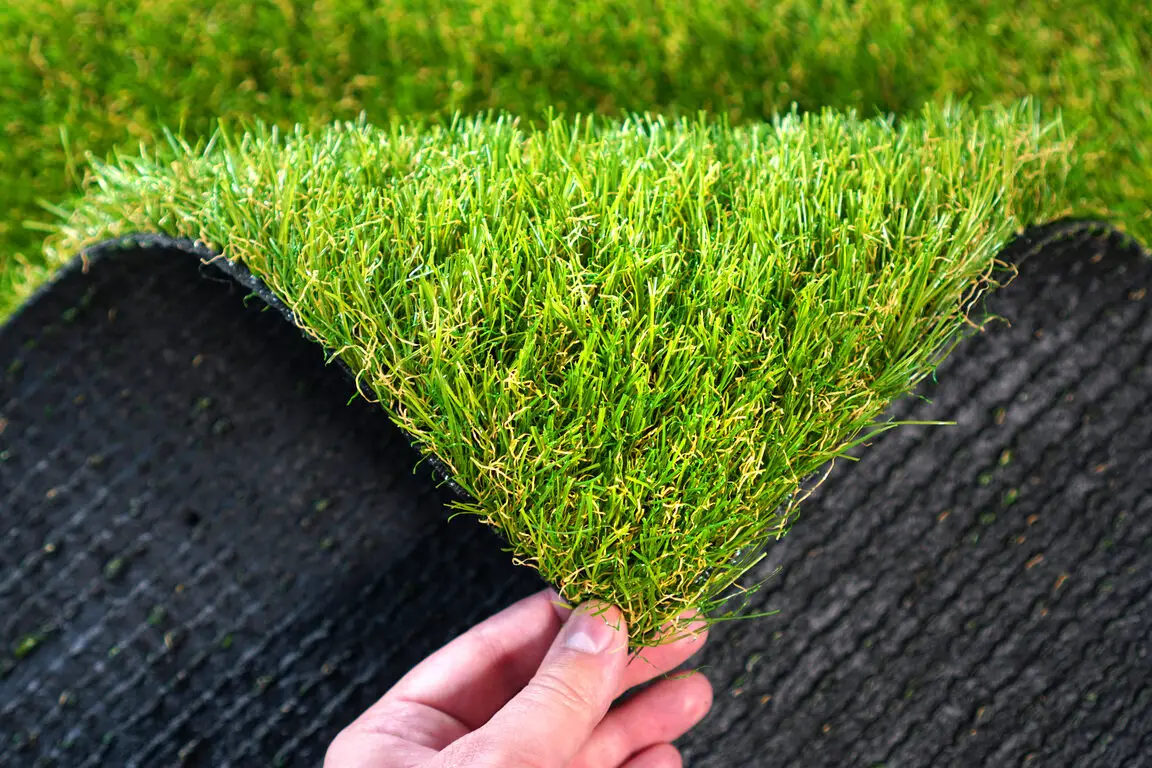
Artificial turf is sold as low-maintenance, but it’s not as effortless as advertised. Over time, it fades in the sun, flattens under foot traffic, and traps heat in summer. Once it’s worn, there’s no easy repair—sections usually need full replacement. The upfront cost is high, and the lifespan isn’t nearly as long as natural grass with proper care.
It also creates problems for drainage, especially during heavy rain. Pet odors linger because cleaning artificial turf isn’t as easy as rinsing a patio. And if you live in a hot climate, it can get uncomfortably hot to walk on. Many homeowners eventually wish they had just stuck with real grass.
4. Fancy Fire Pits

A custom-built fire pit seems like a cozy idea until you realize how rarely you actually use it. In many areas, fire restrictions make them practically useless for months at a time. Weather exposure also makes them age quickly—stones crack, metal rusts, and ashes stain. What felt like an investment becomes outdoor clutter.
Portable fire pits often turn out to be a smarter option since they can be stored away. A built-in pit, though, dominates yard space even when it’s not lit. Cleanup after each use is messier than most people anticipate. It doesn’t take long before the “gather ‘round the fire” dream fades.
5. Outdoor TVs

Outdoor entertainment systems sound cool, but technology and weather rarely mix well. Even weatherproof models degrade quickly with exposure to sun and moisture. Picture quality fades, seals wear out, and repairs are costly. They also require wiring, mounts, and sometimes sheltering structures, which all add up.
Another issue is simple practicality—most people just don’t watch TV outside that often. Glare during the day makes screens hard to see, and in cooler months nobody wants to sit outside. If it gets damaged, homeowners often just remove it rather than repair. It’s a lot of money for something that doesn’t deliver consistent value.
6. Swimming Pools

Pools are the king of expensive yard projects that don’t always age well. They’re thrilling when first installed, but maintenance costs are staggering—chemicals, cleaning, and energy bills add up. Liners wear out, tiles crack, and filters need constant attention. It’s an investment that never really stops draining your wallet.
Pools also limit resale value depending on where you live. Some buyers see them as a liability rather than a perk. In colder climates, they sit unused for most of the year but still require off-season care. Unless you’re truly pool-obsessed, it’s often more trouble than it’s worth.
7. Gazebos and Pergolas
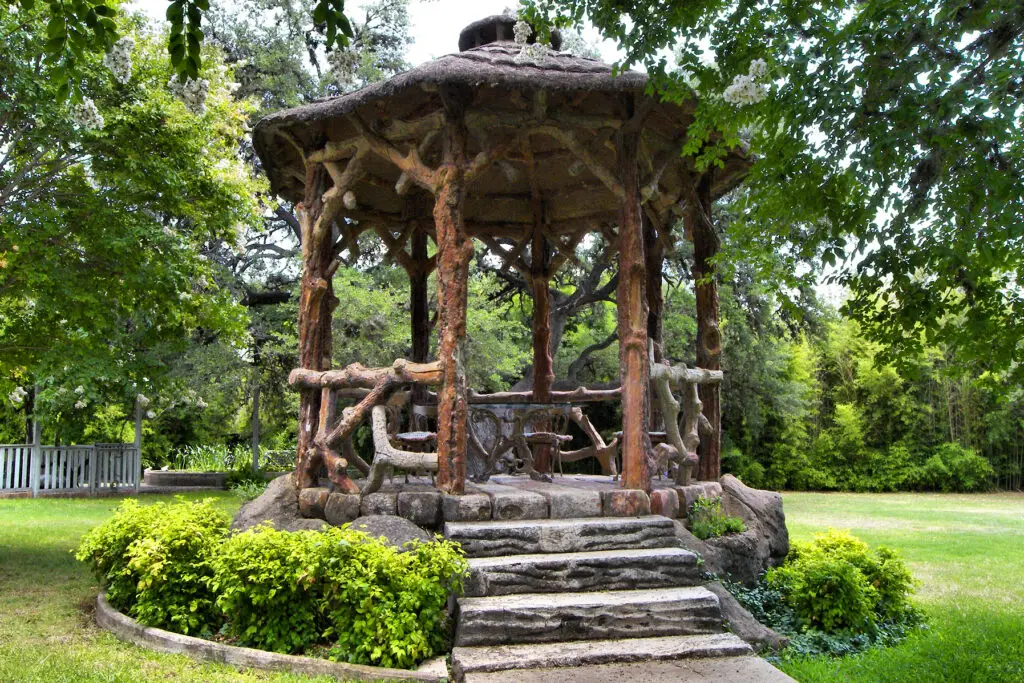
A beautiful wooden gazebo or pergola can transform a yard—for a while. But without nonstop upkeep, wood warps, cracks, and succumbs to termites. Even treated lumber eventually shows its age. Paint and stain need to be reapplied every couple of years just to keep it looking decent.
Meanwhile, these structures don’t provide as much function as expected. They don’t offer full weather protection, so rain and strong sun still ruin your time outdoors. The cost of repairing or rebuilding them when they inevitably decline is steep. Often, homeowners end up tearing them down years sooner than they thought.
8. Built-In Seating
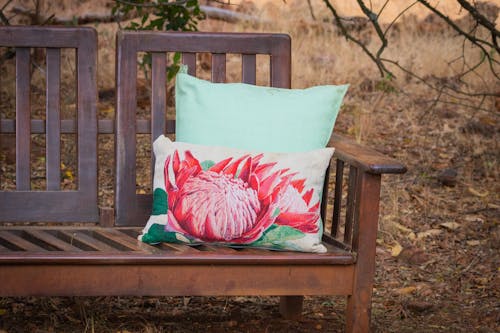
Custom stone or concrete seating looks sleek at first but ages poorly. Weather stains, cracks, and chips make it lose appeal fast. Unlike movable furniture, it can’t be swapped out when styles change. Comfort is also an issue—stone benches aren’t exactly inviting without cushions.
Cleaning is another headache since dirt settles into porous materials. Replacing cushions repeatedly adds to the ongoing expense. If the structure cracks or shifts due to settling ground, repairs are tough. It’s a high-cost feature that ends up underused.
9. Putting Greens
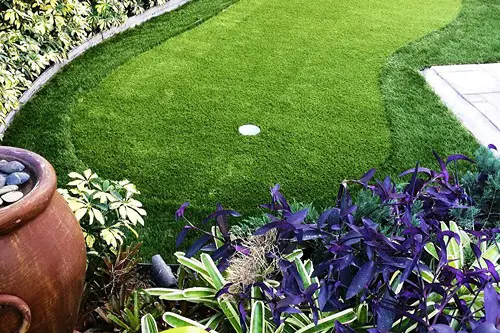
A backyard putting green may thrill golfers initially, but it takes serious upkeep. Synthetic turf flattens, gets discolored, and needs specialized cleaning. Natural grass versions are even worse, demanding constant mowing, rolling, and watering. Without maintenance, they quickly lose the smooth surface that makes them functional.
The other reality is usage—most people don’t practice golf at home as much as they think they will. A few fun afternoons eventually give way to neglect. Once it looks shabby, it’s just an eyesore that’s expensive to remove. What starts as a personal luxury ends as wasted yard space.
10. Large Stone Patios
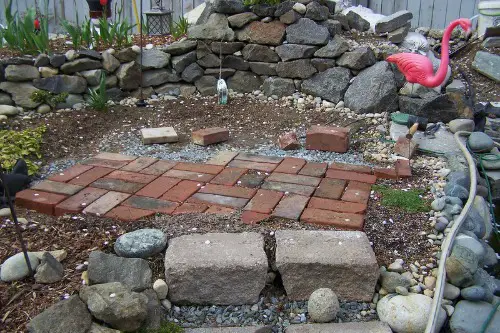
Expansive stone patios look impressive on day one, but nature has other plans. Weeds grow between the stones, moss builds up, and shifting soil causes uneven surfaces. Pressure washing helps but doesn’t prevent long-term deterioration. The larger the patio, the harder—and more expensive—it is to maintain.
They’re also prone to staining from food, drinks, or even leaves. Over time, what looked sleek and elegant starts looking patchy and old. Re-sealing and re-leveling costs add up quickly. Many homeowners regret going big instead of opting for a smaller, easier-to-manage space.
11. Outdoor Bars
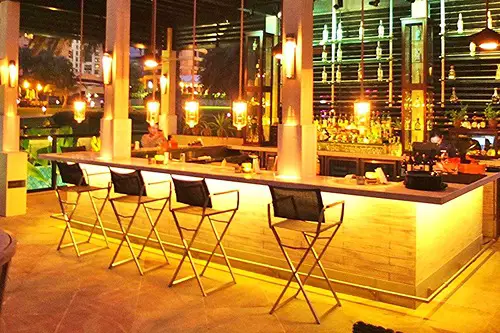
Like outdoor kitchens, outdoor bars seem like they’ll turn your yard into the ultimate hangout spot. In reality, they weather quickly and rarely get used enough to justify the cost. Liquor and mixers can’t stay outside, so setup and teardown become a hassle. And countertops exposed to sun and rain degrade fast.
Cleaning and pest control add another layer of annoyance. Insects are drawn to sticky spills, and outdoor fridges rarely last long. When not in use, the bar just becomes an awkward hunk of yard furniture. The novelty fades, but the maintenance remains.
12. Custom Playgrounds
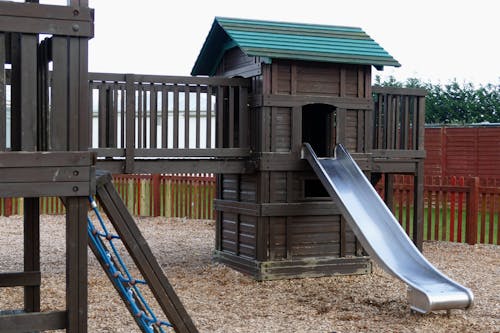
A big wooden playground for the kids feels like a worthwhile investment at first. The problem is, kids outgrow them fast, often within a handful of years. Meanwhile, wood deteriorates, hardware rusts, and safety concerns pile up. What once was the centerpiece of the yard becomes an eyesore.
Playgrounds also take up valuable space that could be used for something long-lasting. Once the kids move on, tearing it down is a project in itself. Maintenance costs—re-staining, replacing bolts, fixing slides—don’t stop just because the kids stop using it. It ends up being a short-lived expense for most families.
13. Large Decorative Planters
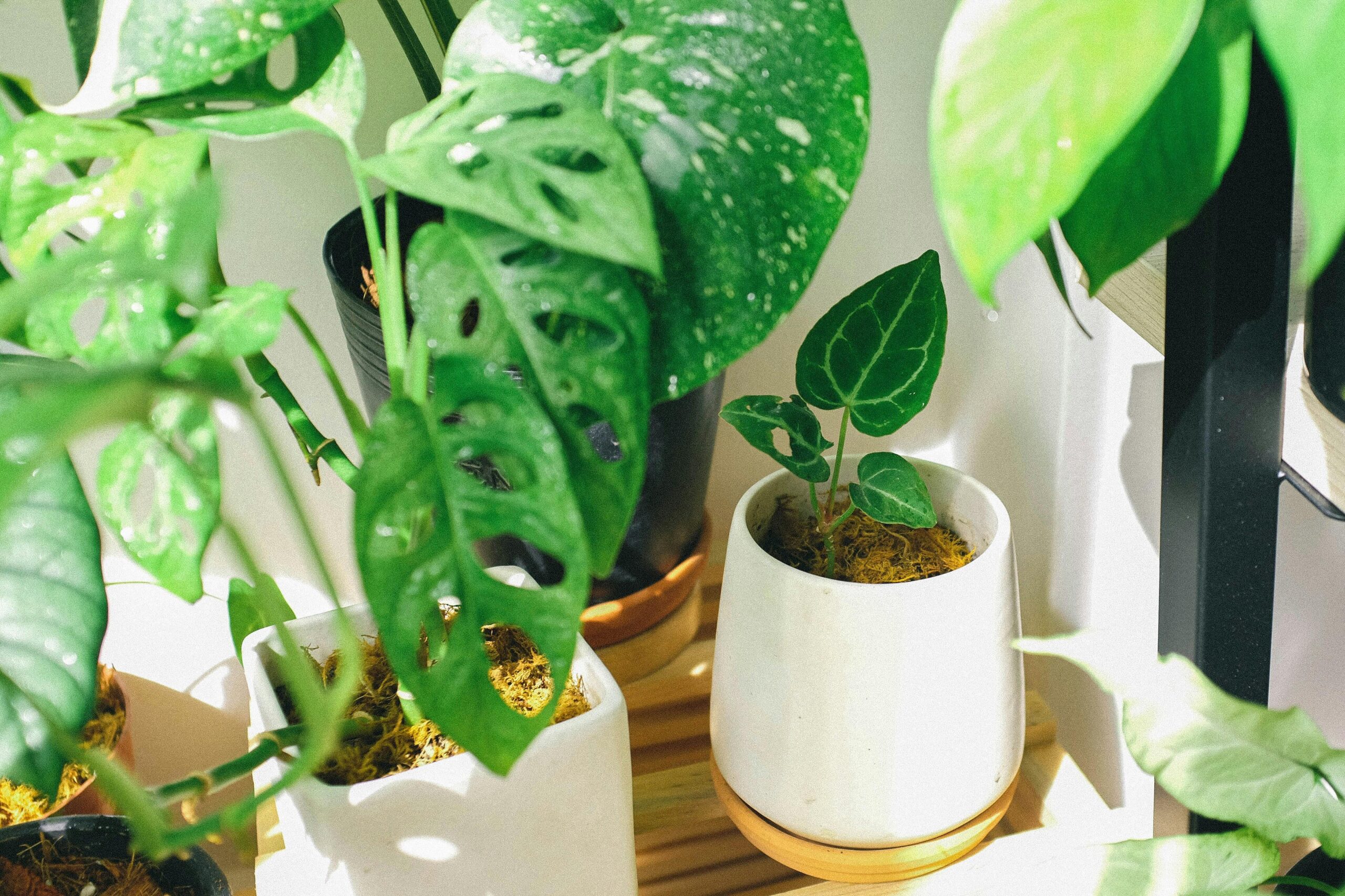
Big decorative planters look classy but are surprisingly high-maintenance. Over time, they chip, crack, and fade, especially under direct sun. The soil inside compacts and drains poorly, causing plant health problems. Plus, they’re heavy and not easy to move when you want to rearrange.
Replacing plants season after season adds to the ongoing cost. If one planter cracks, replacing it isn’t cheap, especially for stone or ceramic styles. They also become outdated style-wise much faster than permanent landscaping. In the end, they’re more hassle than they’re worth.
14. Sports Courts
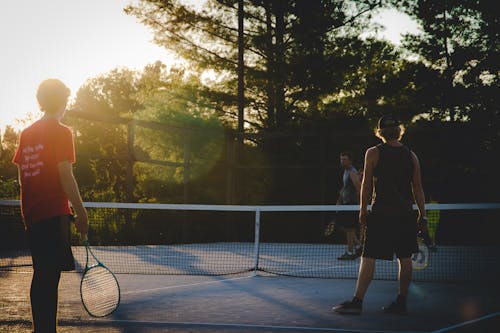
A backyard tennis or basketball court sounds like a dream setup. But upkeep is a nightmare—paint fades, surfaces crack, and weeds creep through. Regular resurfacing is expensive, and drainage issues only make things worse. Unless you’re a serious athlete, the court usually sits unused most of the time.
Courts also take up huge amounts of yard space, making them difficult to repurpose later. They can even hurt property value since not every buyer wants one. The maintenance bill grows while the actual usage declines. It’s the classic case of a luxury project that ages poorly.
This post 14 Expensive Yard Projects That Age Like Milk was first published on Greenhouse Black.
